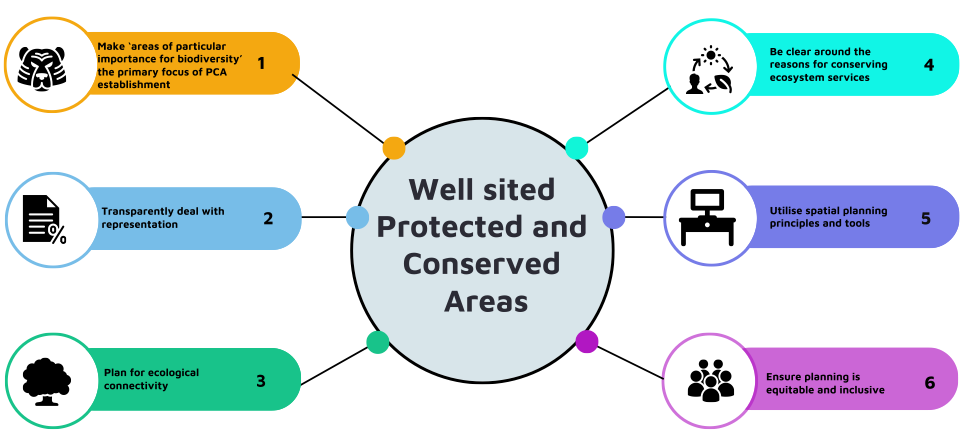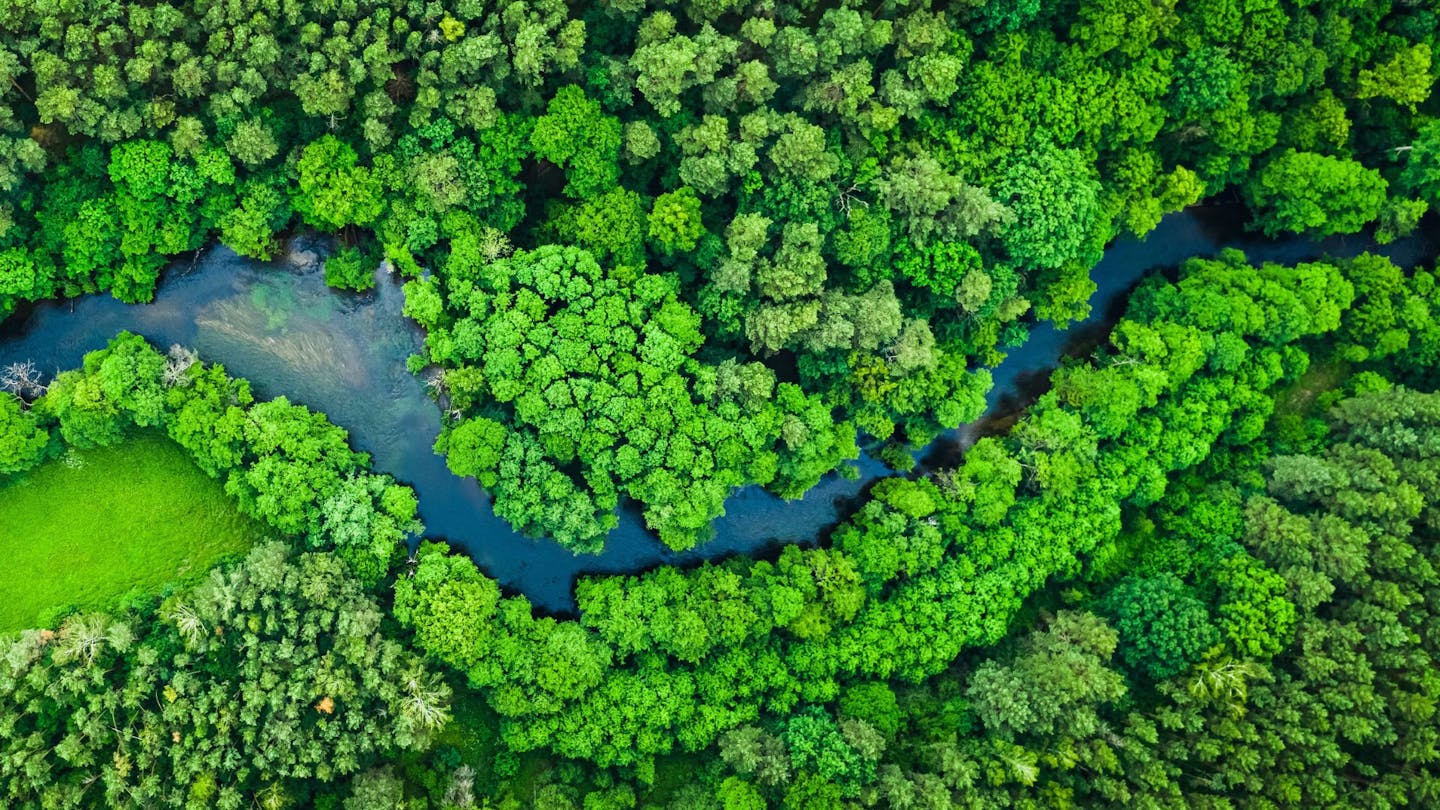A Guide to Expanding Protected & Conserved Areas under the UN Global Biodiversity Framework
- Nature Conservation
- Land Conservation
- Protected Lands
- Climate Refugia
- Rarity Sites
- Indigenous Tenure
- Wildlife Connectivity
- Biodiversity
In December 2022, more than 190 countries sealed a landmark deal to halt and reverse biodiversity loss by 2030.
The Kunming-Montreal Global Biodiversity Framework—the GBF—calls upon governments to take urgent action to halt and reverse biodiversity loss..
Protected and conserved areas will play a key role. Currently, the world only safeguards 17% of terrestrial areas and 8% of marine areas, and many of these areas are not effectively managed or well-placed to achieve biodiversity outcomes.
Target 3 of the framework greatly expands these areas, setting a '30 by 30' goal -- to effectively and equitably protect and conserve 30% of all lands, freshwater bodies, and oceans by 2030.
With just seven years remaining, it's vitally important that we prioritize quality over quantity when designating new areas to support biodiversity and ecosystems.
In a recently published paper, we lay out six principles that guide governments to achieve a high-quality protected area network, providing the best chance of halting and reversing biodiversity loss while upholding the rights of Indigenous Peoples and local communities.
Six broad principles that can guide planning and ensure protected and conserved areas are well sited.

Principle 1. Make ‘areas of particular importance for biodiversity’ the primary focus.
Past efforts to expand protected and conserved areas have often ignored the one thing that matters most -- the rich biological diversity that makes life on Earth possible.
There are 12 major biodiversity elements around which governments should design their conservation targets:
- Rare or threatened species
- Threatened ecosystems
- Range-restricted species
- Globally significant ecosystems
- Ecosystem integrity
- Areas for species life stages
- Species aggregation areas
- Climate refugia
- High-carbon ecosystems
- Water bodies supporting wildlife
- Representative ecosystems
- Ecological connectivity
We show that there are methods and datasets available right for decision makers to identify each of these 12 key biodiversity elements.
Principle 2. Be clear about ecosystem representation goals.
Achieving a representative protected and conserved area network is important, but solely focusing on the amount of representation of different ecosystem types does not necessarily mean critical biodiversity areas will be captured, so transparency of mapping approaches is essential.
Principle 3. Plan for ecological connectivity.
Ensuring ecological connectivity across landscapes, rivers, and seascapes is critical for the natural movement of species and sustaining key ecological and evolutionary processes. This is especially so when considering the increasing impacts of climate change.
Principle 4. Be clear about the reasons behind conserving ecosystem services.
To meet the topline goals of the GBF, the protection of ecosystem services by themselves should not be the sole reason for the establishment of conservation areas. A clear, positive link with biodiversity is needed.
Principle 5. Utilize spatial planning principles and tools that are widely available.
There is a large array of data sources freely available to support conservation priorities, and technology can be used to leverage these data for optimal decision making.
Principle 6. Ensure planning is equitable and inclusive.
Governments must safeguard human rights when implementing new conservation areas -- with the free, prior, and informed consent of Indigenous peoples and local communities.
It is important to recognize that every nation must play their part if the mission and vision of the CBD is going to succeed. ‘30 by 30' is a global goal, and every government needs to generate specific area-based targets commensurate with the needs of its biodiversity, ecosystems, and people to help meet this target.
While specific national targets may differ in extent, following these six principles will ensure that protected and conserved areas prioritize the best long-term outcomes for biodiversity.
We have seven years to implement this critical target. It is time to act on the agreed treaty that is the Global Biodiversity Framework.
Read the full paper



